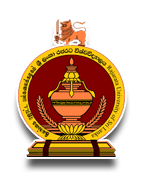Submission Preparation Checklist
- The submission has not been previously published, in part or in whole, nor is it before another journal for consideration (or an explanation has been provided in Comments to the Editor).
- All third-party-owned materials used have been identified with appropriate credit lines, and permission has been obtained from the copyright holder for all formats of the journal. Authors acknowledge their responsibility to gain all permissions prior to submission.
- All authors qualify as authors, as defined in the authorship guidelines, and have given permission to be listed on the submitted paper.
- Tables are all cited in the main text and are included within the text document.
- The text adheres to the stylistic and bibliographic requirements outlined in the Author Guidelines. Every effort has been made to ensure that the submission is ready for peer review according to the journal’s review policy. If submitting to a peer-reviewed section of the journal, the submitted files (including file properties) have been anonymised.
Copyright Notice
© Sri Lankan Journal of Agriculture and Ecosystems
Authors are required to transfer the copyright of their articles to the Sri Lankan Journal of Agriculture and Ecosystems.
From December 2020, all articles in the Sri Lankan Journal of Agriculture and Ecosystems are licensed under the terms of the Creative Commons Attribution 4.0 International Licensewhich permits unrestricted use, distribution and reproduction in any medium provided the original author and source are credited.
Privacy Statement
The names and email addresses entered in this journal site will be used exclusively for the stated purposes of this journal and will not be made available for any other purpose or to any other party. The full privacy policy can be viewed here.
Publication Fees
This journal does not charge article processing fees.



